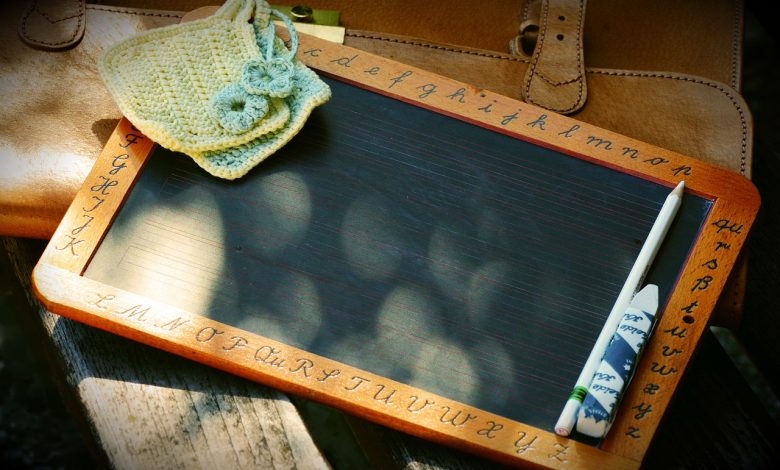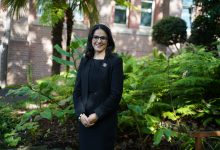The impact of 34 years of the marriage bar
“I desire to protest forcibly and empathetically against your wickedly unjust proposal to dismiss me, a proved and experienced teacher of twenty five years experience. I have committed no offence nor broken any regulations. Neither have I failed in any respect to carry out the duties of my position…”

So begins the letter from Thelma Hitchcock, a teacher at Parramatta Girls’ School to G. Ross Thomas, the Director of Education in NSW.
“I have been assured by numerous inspectors that my work is done well. Yet I am to be subjected to the indignity and shame of a summary dismissal. My chosen career is to be ended, thus depriving me of the results of twenty years’ striving to obtain the position I now hold – that of the mistress of a first-class school. The regulations of the Department promised me security of tenure until age sixty. I have fulfilled my side of the contact and I view with disgust the despicable breach of contract now contemplated by a once-honorable Department.”
In August 1932, Thelma – and over 800 other married female teachers in New South Wales – received a letter from the Department of Education informing them of their imminent dismissal.
Shortly after, the Married Women (Lecturers and Teachers) Act was passed by the NSW Government, forcing the resignation of married women from the Department of Public Instruction (later known as the Department of Education). It was the height of the Depression, jobs were scarce and the rationale was that a married women had her husband to support her and therefore did not require the income.
The Act did allow for married teachers to appeal the ban, applying for an exemption to the law. They were expected to submit a statutory declaration as well as provide detailed and personal information about the income and expenditure of their family. As Thelma writes, it was both humiliating and discriminatory.
Almost 700 declarations for exemption are held by the Museums of History NSW, each detailing the reasons why they felt they should be exempt. Thelma Hitchcock’s runs to 21 pages, with numerous letters of appeal and declarations regarding her and her husband – also a teacher – income and expenditure.
“I appeal against the shameful injustice of your dismissal notice, at the same time I request an extension of time to state my case since I am assured that the whole proceedings are illegal until the present iniquitous bill is passed by Parliament….”
Thelma didn’t just feel the unfairness and indignity of the sudden dismissal, but a financial reality with life-altering consequences. As with many of the other married teachers seeking an exemption due to hardship, Thelma’s weekly income of 6 pounds, 14 shillings and eight and a half pennies was more than her husband Leslie’s, income of five pounds, 9 and 1. His income would not be enough to live on.
In addition to the possible loss of her home and the dismissal of her housekeeper, Thelma wrote of the impact her loss of income would have on extended family. She and Leslie did not have any children, but they financially supported her younger brother who was struggling since the bankruptcy of his motor garage business as well as her husband’s invalided sister.
Sadly, even if married women like Thelma were given permission to continue working, it was under altered conditions, with lower wages and a loss of their superannuation. They also had to reapply every year and justify their continued need for employment. Some women tried to hide their married status and become – as Annabel Crabb delightfully calls them, ‘white-veil criminals’ – or chose to ‘live in sin’.
For Thelma – as it would have done for many teachers – her dismissal would have had a significant impact on another vulnerable group beyond her own family – her students. In her letter dated 6th October 1932 she wrote:
“I desire to protest against my unfair dismissal from the service on 31st October 1932, exactly eight days prior to my 6th A Class sitting for their Primary Final Examination. I beg to state that 26 of my girls are competing for High School Entrance and 4 for Bursaries, while the other 21 desire passes to the Domestic Science School, and that a change of teacher and the resultant disturbance will be disastrous to their chances in this, the first examination of their careers.”
Despite common belief, the marriage bar was not universal in the years following World War 2. A report published in 1947 by the Australian Council for Education Research (ACER) titled ‘The Married Woman and the Right to Teach’ showed that of the forty countries surveyed by the International Bureau of Education, only four still did not allow the employment of married women: Australia, Ireland, the Netherlands and South Africa.
It wasn’t until 1966 that the Act was finally repealed in Australia. The impact of the ban over three decades had long-lasting consequences, including, as activist and author Merle Thornton wrote, the fear that girls might be encouraged to believe their adult status and standard of living would derive from their husbands rather than their own employment and potential.
Today, despite making up the vast majority of the teaching profession, female teachers – married or otherwise – are still earning less on average than their male counterparts, around 11 percent, according to the Australian Bureau of Statistics.







